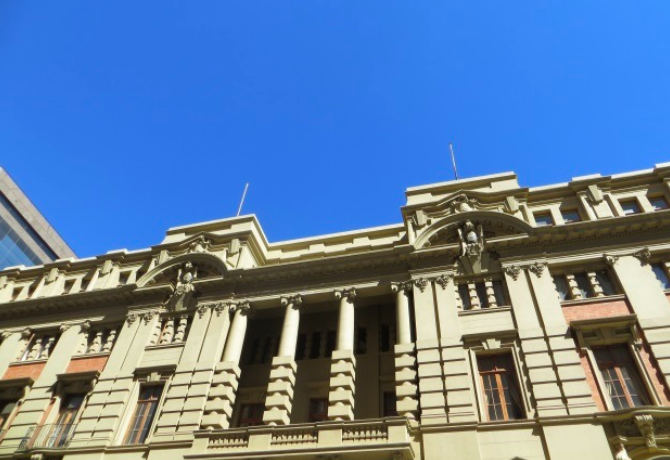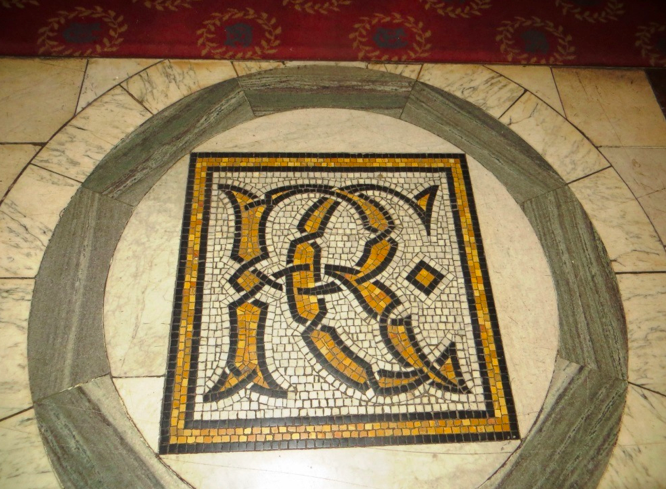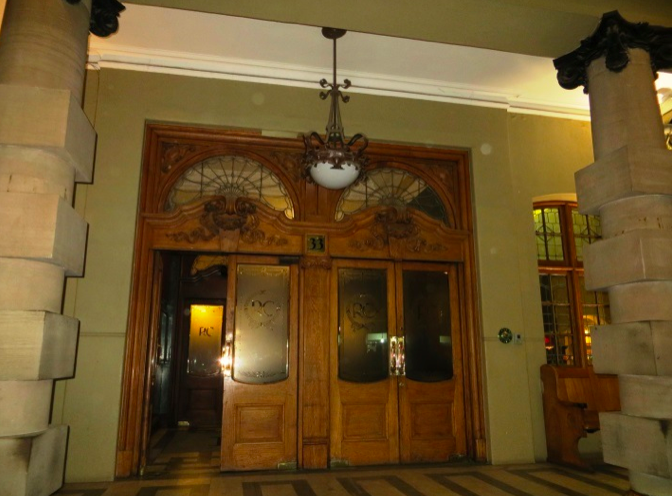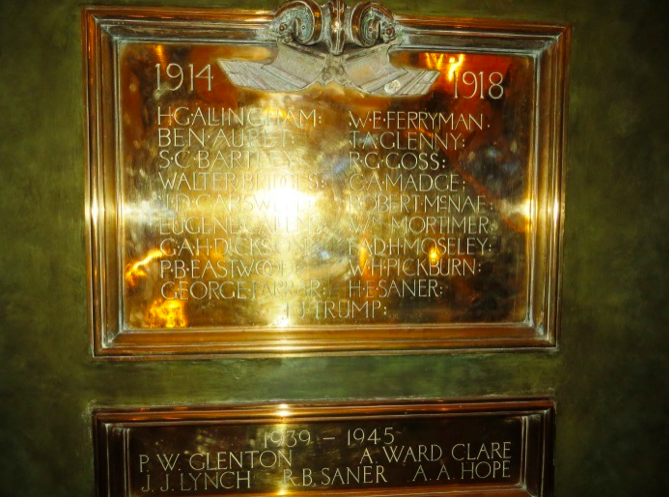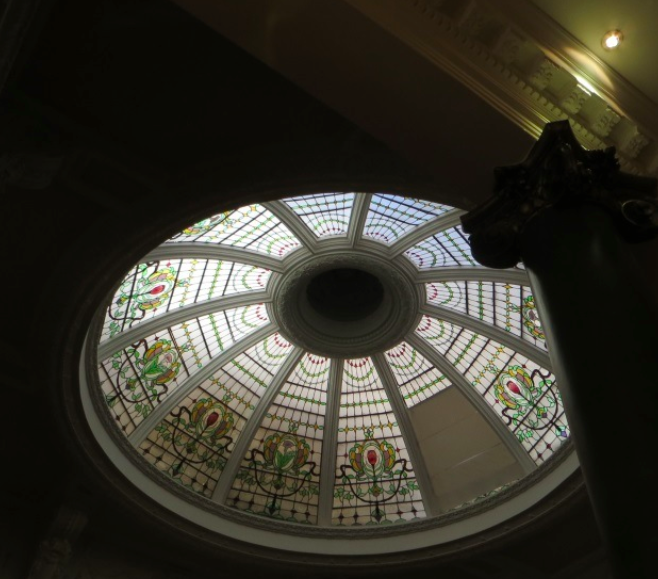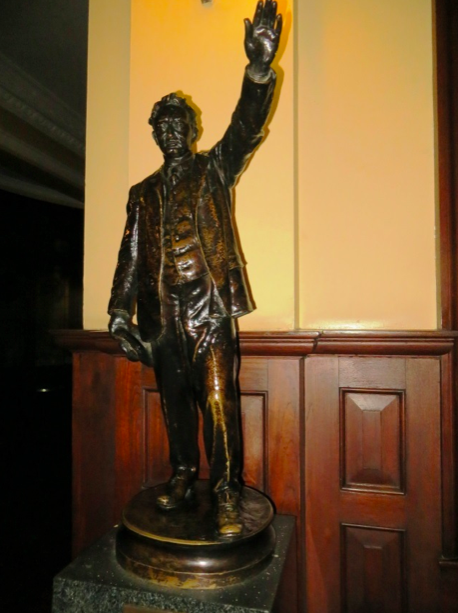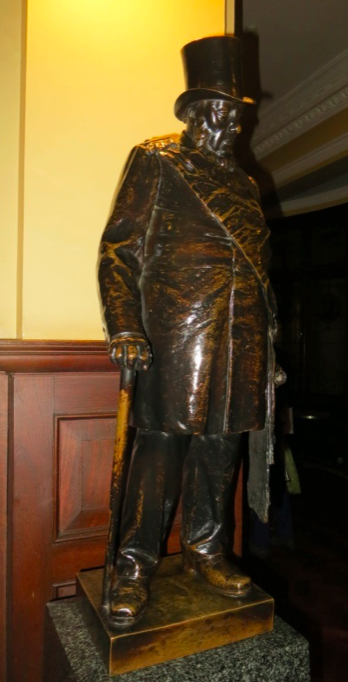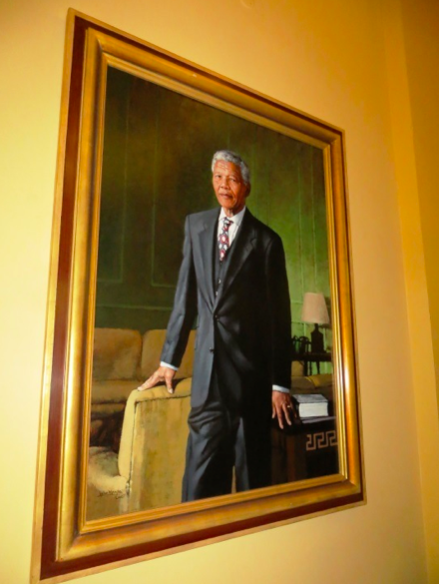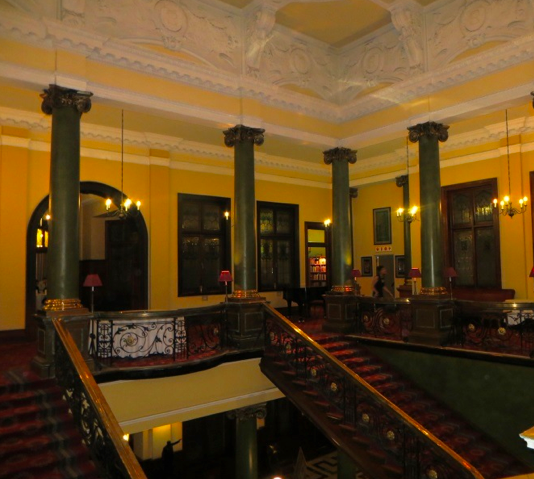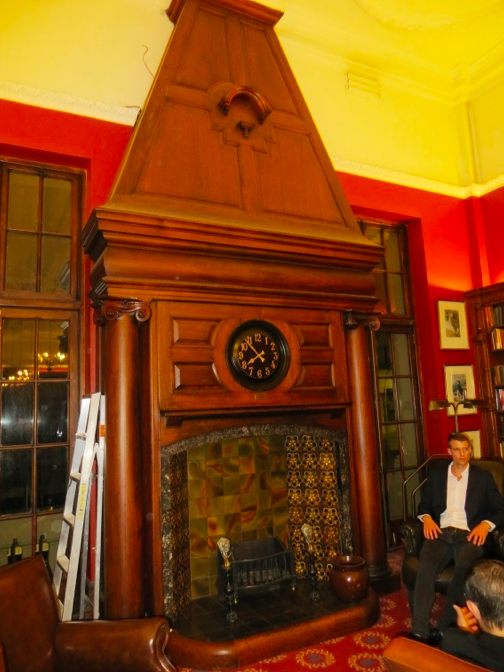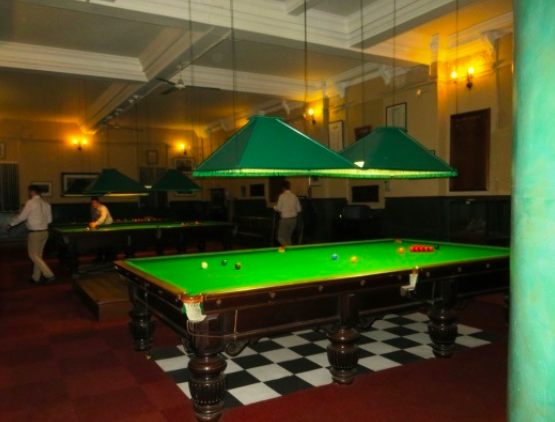
Disclaimer: Any views expressed by individuals and organisations are their own and do not in any way represent the views of The Heritage Portal. If you find any mistakes or historical inaccuracies, please contact the editor.
The Rand Club is one of Johannesburg's great landmarks. It has a rich and controversial history and remains a major attraction for the public on occasions when access is arranged. Kathy Munro, Honorary Associate Professor in the School of Architecture and Planning at Wits, visited the Club recently exploring every nook and cranny and pondering the future of this iconic institution. The Club has been reinventing itself for a number of years but tough decisions lie ahead...
Johannesburg’s Rand Club is an historic city institution that survives on the original site where the first gentlemen’s club was built. It was regarded as an essential institution in the new mining town and following in the style of the Kimberley Club. Founded by Cecil John Rhodes and the early city founding fathers of Johannesburg in 1887, this was a club for the professional men of the town, those with political aspirations, the business leaders. All men of course. It is redolent of the Reform Club of London.
The Club is still an important visible presence in the city and remarkably survives. Reminding us that Johannesburg never hesitated to build in boom times, this is the third Club building, erected in 1904, the architects being Frank Emley and William Leck. The Club expresses a come-of-age solidity and visible success of Edwardian era Johannesburg. It exudes permanence. It was erected on two stands with the main entrance and frontage on Loveday Street. It is a four storey edifice and extends from Fox Street to Market Street. The style is classically Edwardian baroque with a nod towards art nouveau details. The structure was made of prefabricated steel, imported from England and then transported and reassembled on site, the cladding is of concrete. The stained glass windows are impressive.
Upper Section of the Main Facade (Kathy Munro)
On Thursday evening last week, the Johannesburg Heritage Foundation (JHF) hosted a well attended, obviously popular tour of the Club for its members on a lovely warm spring evening. The JHF always offers heritage rich, totally professional tours. Adam Golding, a seasoned tour guide led the group and knowledgeably expanded on the history of the Club from its earliest days to the present. Adam did it all without a note in his hands, a great performance. Our JHF group was introduced to the Club as we gathered in the foyer at the foot of the main grand carpeted staircase, with our backs to the bar and the Club R C mosaic logo set in the marble floor at our feet. It is a good spot to be introduced to the spirit of the Club with all its spaciousness, presence, history and grandeur. The Club on this Thursday evening was actually alive with people who were there to participate in the popular quiz night.
R C Mosaic Logo Set in the Marble Floor (Kathy Munro)
An evening tour gives a different feel and ambience. Johannesburg streets are dark, but the details that one would miss during the day catch the eye when they gleam in the street lights. Adam took us on a a short walk down Fox Street to Simmonds Street to set the scene back in time to Victorian and Edwardian architecture of the old town. The Club itself is well lit and still beckons Johannesburg people to step inside and head for the longest bar counter in Africa, for a local beer to down the dust of the Joburg streets at day’s end. Gathering outside in Loveday Street one had the chance to appreciate the position of the Club, the vision of the architects, notice the symmetry and harmony of the solid architecture with the imposing wooden front doors set back behind the entrance portico. Take a look at the classical but rather odd front columns and the stained glass windows. One picks out the art nouveau features in brass and glass and concrete finishes. It is so much a building of its time, completed in 1904, this Club offered all the sociable services and facilities expected by the successful man about town - a fine meal, even finer wine, a good beer, the latest books in the library, the daily newspaper, a game of billiards in the basement, a shoeshine or a shave and a trim by the resident barber or a bedroom on the top floor.
Imposing Wooden Front Doors (Kathy Munro)
It was an all-white establishment until the late 20th century. At one time, the Club was reputed to be anti-Semitic and blackballed Jews, though in fact many early members were Jews and it was a Jew who donated one of the stands of the Club. It was always a club that was strongly colonially pro Empire, and pro British and of course very English in its style and traditions. Here you would expect to toast the King or the Queen of the Empire and later the Commonwealth.
There is a gleaming polished war memorial prominently positioned as a brass plaque on the landing on the main stairs to ever remember Club members who lost their lives in the First and the Second World Wars. One can argue that the Club was a product of its times at a time when belonging to a Club was a natural part of life in Johannesburg for a certain class. It was not the only club in town but it was certainly the oldest and most prestigious. Many a business deal in mining must have been struck in the magnificent first floor grand dining room.
Brass Plaque to Remember Club Members who Lost their Lives in the First and the Second World Wars (Kathy Munro)
The Club is facing some difficult decisions these days and is unlikely to survive as it is presently structured. I have never belonged to the Club and for me I don’t think I would join (though I might take the Groucho Marx line on that one, “I refuse to join any club that would have me as a member”), simply because I do not work or socialise in the inner city. But the Club epitomises all that is marvellous about Johannesburg's social history, the nuances of its politics and the aspirations of the nouveau riche citizens. I have researched the history of the Club and also spoken as a guest speaker (along with Brendan Hart) on the occasion of the 110th anniversary of the 3rd Club Building early in 2015.
The Club offers its 500 or so members of today much the same services as yesteryear, though no longer residential facilities. One can be a country member or a town member and there is the advantage of reciprocity with other similar clubs around the world. The atmosphere is still strongly masculine, though today the Club admits women and has become far more welcoming, open to change, youth and egalitarian. I remember a time when women, with the exception of royalty, could not use the main staircase. Instead, as a lady guest at a private dinner you took the lift (and the lift is the original 1904 antique cage). I never carried a suffragette banner into the Club's manly domain.
History is a living presence here. In June 2005 a fire did much damage to the interior of the Club Building. Although only ten years ago the decision was taken to restore and refurbish the Club in period style, the restoration meant putting the public and most visible rooms of the Club back to where it was a century ago. It was recreated to look as it did in 1904. Some fine portraits were lost from the north corner of the first floor. The greatest loss was the central magnificent stained glass dome over the main staircase. This too was restored and the new design was very beautiful and fitting. Unfortunately the replacement dome was structurally unsound and safety dictated that the dome be put into storage and now a fabric cover is in place high above. I have seen both the original dome and the replacement dome and the absence of the stained glass canopy is a felt absence.
The Replacement Dome (Kathy Munro)
Rhodes’ spirit is still right there, as you move towards the bar. He stands as a custodian to the colonial past as a small bronze figure, in iconic pose pointing to a British hinterland in Africa. Nearby is a second bronze figure also on guard at the entrance to the bar, the bronze of a top hatted Paul Kruger, by Van Wouw. He was ever Rhodes’ political counterpart and opponent. Rhodes had been Cape Premier until forced into resignation because of the implications and inferences drawn from the Jameson Raid and Kruger as President of the Transvaal took the two Boer republics into war against Britain in 1899, and ultimately fled into exile in Switzerland. Both remained heroes to their supporters but both were dead by the time the Third Club opened. Their enduring presence signals that this Club took its political role and its history seriously. It was members of the Reform Committee who all belonged to the Rand Club who plotted the Jameson Raid which was the tinder that ignited the Anglo-Boer war of 1899. It was a long fuse and perhaps the Kruger figure is a gift of atonement.
Bronze Figure of Rhodes (Kathy Munro)
Bronze Figure of Kruger (Kathy Munro)
Today the Club’s political influence has waned and it is the custodian of extraordinary mementos, art works and antiques in show cases and simply part of the décor. The walls are lined with a unique collection of historic photos of important people, including royalty, who were all Club members, or who were welcomed by the mining establishment at the Club. There are watercolours of Thomas Baines, political cartoons of the early 20th century, antique maps of Africa and interesting bronzes. The atmosphere is absorbingly museum like. One needs to spend hours here in daylight studying this treasure trove. So many quirky items demand attention – model ships, ancient weaponry (Mausers and Henri Martini rifles) together with assegaais, a stuffed otter, presentation scrolls, or a souvenir yacht’s bell complete with the Lloyd’s register extract.
There’s a framed panoramic view of Johannesburg of the late 1880s, the early mining camp and first houses spread out across the ridges. Heavy carved wooden clocks keep watch over comings and goings and tick away in timeless motion.
The feel and the style of the place is frozen in time and the strange thing is that although there is a bust of Luthuli here, a portrait of Mandela there, a photograph of Mbeki in this spot or the copy of the Pietro Annigoni portrait of the very regal young Queen there, you feel that you have stepped back to about 1900. You almost expect to be greeted by Rhodes himself. The creepiest thing on display is the small bronze hand of Dr Leander Starr Jameson, Rhodes’ great friend and lieutenant.
Portrait of Mandela (Kathy Munro)
Where did all these marvellous artefacts originate? Each early member must have donated something reflecting their collecting interests and personal history. I noticed the signed photographs of royalty on the walls (such as George VI and Edward, Prince of Wales), gifts following their visits and stay at the Club. Perhaps it is the colour combination, the green of the interior columns, the baroque decorated ceilings, the discreet gold trim, the deep maroon wall to wall distinctive logo Rand Club carpet, the mustard coloured walls that set the mood and add to the presence of place – it all adds up to a very clubby but assured feel. The spacious lay out of the Club's rooms and dining areas, the spread of brown leather couches, the wrought iron curved banisters and the impressive chandeliers exude discreet dated opulence. It is still so very masculine and the presence of Rhodes is everywhere. Rhodes has not fallen here and there is still a Rhodes room with his portrait dominating.
Perhaps it is the Colour Combination (Kathy Munro)
One ascends the grand staircase to the main dining room and private rooms set back from the enclosing first floor corridors. Of course the ladies powder room is discreetly tucked away on the second floor (more stairs to climb memorabilia to view but it’s a long hike).
My favourite room is the wonderful, magnificently proportioned library with the fireplace at one end and the walls lined with books, handcrafted wooden book cases, more leather couches, library tables covered with the latest book acquisitions and newspapers, and a sign demanding silence and respect. There is a grand almost baronial wooden fireplace, set with a large dial clock. With no books on the lower shelves facing the armchairs, it's your moment to put your feet up and snooze after a boozy Club lunch. The Rand Club has one of the finest Africana libraries on the continent and has been collecting significant books for years. Here you can almost smell the 1900s.
The Grand Wooden Fireplace (Kathy Munro)
We dined in style in yet another private room, the Armoury, alongside cabinets containing treasures of substance and note. Our meal was an excellent soup, a cold beer, some champagne and a reasonable lamb curry. The wines flowed and service by attentive staff was excellent. Substantial tips are taken as a given.
Our evening ended with a peep into the billiard room, very dark, very green and here Club members remain very focused on their coloured balls. On the way downstairs the haunting eyes of the trophy preserved buck on the wall stared at me wistfully. There is now also a small theatre in the basement, done in distressed décor style. We did not inspect the top floor, where the bedrooms were located but that space is in poor condition and awaiting funds for restoration. (I have seen this area on a previous visit and indeed it could be converted into a super boutique hotel).
A Peep into the Billiard Room (Kathy Munro)
Challenging and Difficult Times
The Rand Club is facing challenging and difficult times. Its finances, some bad luck and shifts in demography and business location have brought declining fortunes. The centre of gravity of business has shifted along with the Stock Exchange to Sandton and Rosebank. The fact that we don’t arrive at the Club in our horse drawn carriages but need to find a parking space which is in short supply is a discouragement. Despite female membership, fewer men are likely to stay away from their families at night. Joburg is not an all male town. The viability and continuing presence of the Club in the old centre of the city is being debated, though young members have brought new life. There have been a couple of public articles in the Financial Mail and there are some choices currently before the Club.
I hate to think that our evening journey into the heart of Johannesburg, the Club and South African history may be a last hurrah. The Club has a future but perhaps not as the Club as it currently is. I see the Club as a heritage asset, a superb living museum, and a living vibrant memorial to the Edwardian city in its hey day.
Personally, I would love for the Club to be preserved as a special house museum and historical centre. Charge an entrance fee, keep the bar and the liquor license, keep offering beer in pewter mugs, offer the many services to all, welcome guests attired in jacket, tie and high heels, serve a simple curry meal and capitalise on being the grand custodian of the past. The Library has to be saved as a living space for newspaper fiends and bookaholics. Why not a separate subscription membership for this brilliant room? Find new partners. Make the Rand Club a must see place for visitors to the city and encourage Johannesburg citizens from all strata of society to celebrate the city’s rich history right here in the heart of Loveday Street, a stone’s throw from the City Hall and Rissik Street Post office (this has to be restored). These are all now decaying treasures. If we don’t all get involved in the Club, there may not be a heritage to celebrate in the future.
Kathy Munro is an Honorary Associate Professor in the School of Architecture and Planning at the University of the Witwatersrand. She enjoyed a long career as an academic and in management at Wits University. She trained as an economic historian. She is an enthusiastic book person and has built her own somewhat eclectic book collection over 40 years. Her interests cover Africana, Johannesburg history, history, art history, travel, business and banking histories.
Comments will load below. If for any reason none appear click here for some troubleshooting tips. If you would like to post a comment and need instructions click here.

